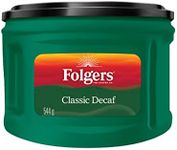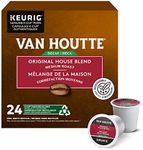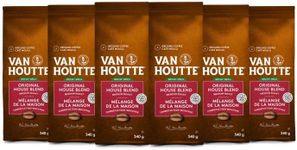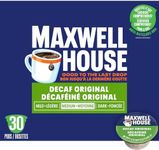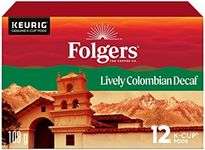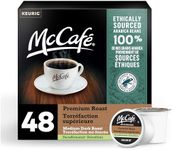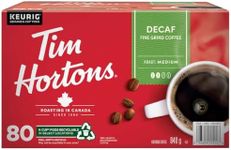Buying Guide for the Best Decaf Coffees
Choosing the right decaf coffee can make a big difference in your daily routine, especially if you love the taste of coffee but want to avoid caffeine. The best approach is to think about your taste preferences, how you like to brew your coffee, and any dietary or health considerations you may have. Understanding the key features of decaf coffee will help you find a product that matches your needs and delivers a satisfying cup every time.Decaffeination MethodThe decaffeination method refers to how caffeine is removed from the coffee beans. This is important because it can affect both the flavor and the chemical makeup of the coffee. Common methods include the Swiss Water Process, CO2 Process, and chemical solvents like methylene chloride or ethyl acetate. The Swiss Water and CO2 methods are often preferred by those who want a more natural process with minimal chemical use, while solvent-based methods are more common and can be less expensive. If you are sensitive to chemicals or want a more natural product, look for coffees labeled as using the Swiss Water or CO2 process.
Roast LevelRoast level describes how long and at what temperature the coffee beans are roasted, which impacts the flavor, aroma, and body of the coffee. Light roasts tend to have a brighter, more acidic taste and preserve more of the bean's original flavors, while medium roasts offer a balance of flavor, acidity, and body. Dark roasts are bolder, with a more pronounced roasted flavor and less acidity. Choose a roast level based on your taste preference: if you like milder, more nuanced flavors, go for light or medium; if you prefer a strong, rich taste, opt for dark roast.
Bean OriginBean origin refers to the country or region where the coffee beans are grown. This is important because the climate, soil, and altitude all influence the flavor profile of the coffee. For example, beans from Latin America often have bright, fruity notes, while African coffees can be floral and citrusy, and Asian beans may be earthier and spicier. If you have a flavor preference, look for beans from regions known for those characteristics. Trying different origins can also be a fun way to discover new flavors.
Grind TypeGrind type refers to how finely the coffee beans are ground, which affects how the coffee brews and tastes. Common grind types include whole bean, coarse, medium, and fine. Whole bean coffee stays fresh longer and allows you to grind it to your preferred size, which is ideal if you have a grinder at home. Pre-ground coffee is more convenient but can lose freshness faster. The right grind size depends on your brewing method: coarse for French press, medium for drip coffee makers, and fine for espresso machines. Choose the grind type that matches your brewing equipment and lifestyle.
Flavor ProfileFlavor profile describes the overall taste experience of the coffee, including notes like chocolate, nutty, fruity, floral, or spicy. This is important because it determines how enjoyable the coffee will be for you. Some decaf coffees are blended to mimic the taste of regular coffee, while others highlight unique flavors from their origin. If you prefer a classic coffee taste, look for flavor notes like chocolate or nutty. If you enjoy exploring new tastes, try coffees with fruity or floral notes. Reading tasting notes on the packaging can help guide your choice.
CertificationsCertifications indicate that the coffee meets certain standards, such as organic, Fair Trade, or Rainforest Alliance. These are important if you care about environmental impact, ethical sourcing, or avoiding pesticides. Organic certification means the coffee was grown without synthetic chemicals, while Fair Trade ensures fair wages for farmers. If these values matter to you, look for coffees with the relevant certifications on the label.
